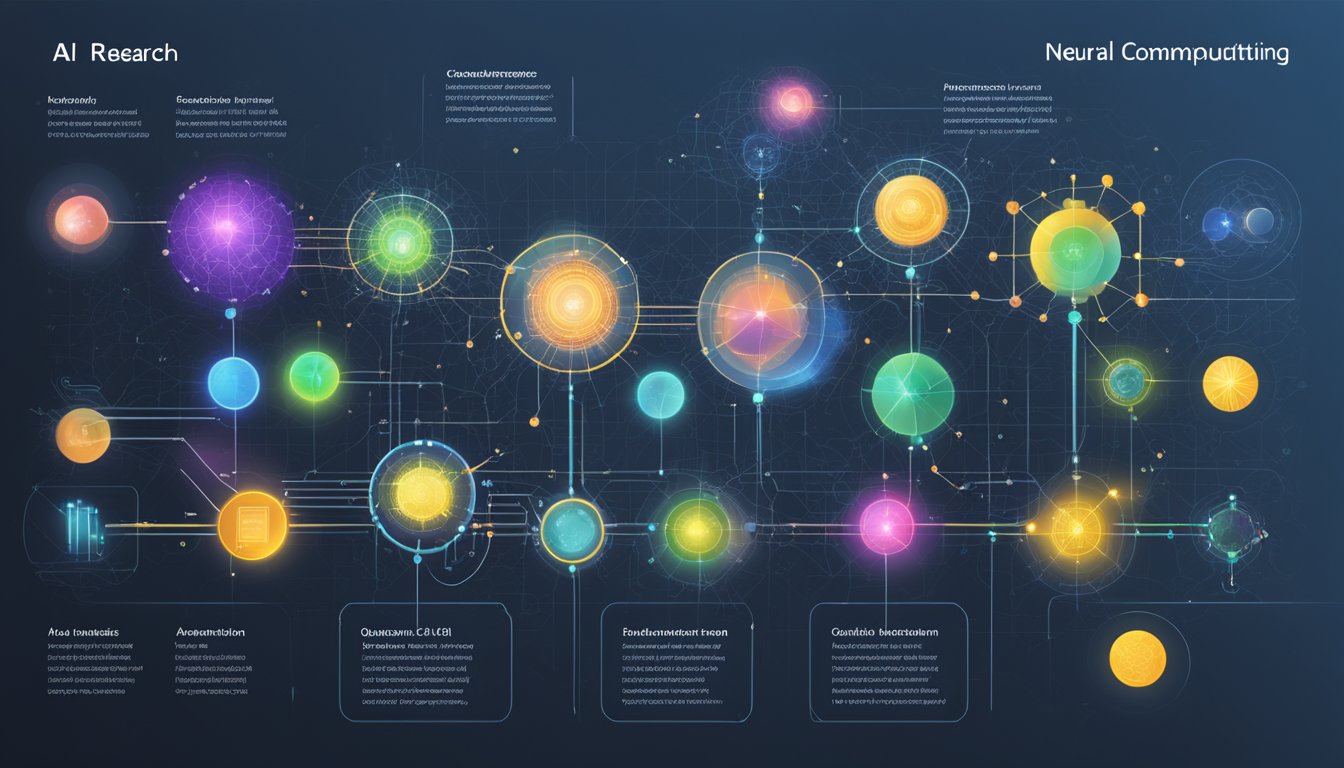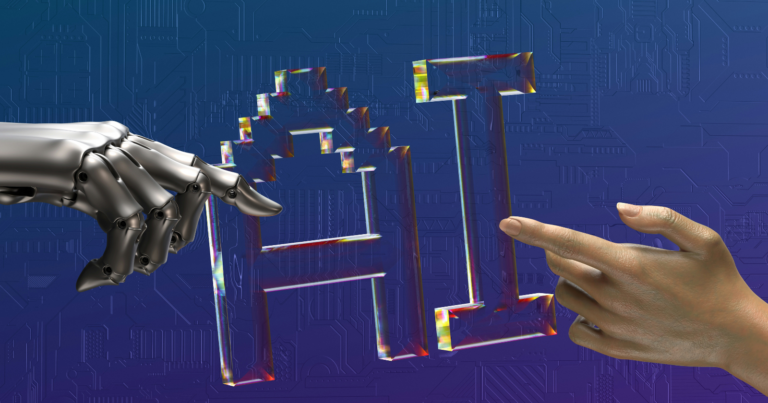AI Researchers and Analysts: Unveiling Industry Impacts and Innovations
Have you ever wondered who the brilliant minds behind the rapidly evolving field of artificial intelligence are? AI researchers and analysts work tirelessly to push the boundaries of what’s possible, blending sophisticated algorithms with innovative thinking. They’re not just futurists; they’re practical problem solvers who are shaping technology that you might already be using in your everyday life. From the virtual assistants on your phone to the tailored recommendations from your favorite streaming service, their work is everywhere, making your life a little bit easier and a lot more interesting.

But what does it take to be at the forefront of artificial intelligence? Well, a mix of creativity, analytical thinking, and a strong grounding in computational theories are just the starters. If you’re fascinated by how technology can learn, adapt, and even outsmart human beings at certain tasks, then diving into the world of AI research and analysis is like peeking into the future. Imagine being part of a team that’s implementing AI to provide groundbreaking solutions in healthcare, finance, transportation, and more.
Understanding artificial intelligence isn’t just about the cool tech—it’s about recognizing the potential to transform industries and impact lives. AI researchers and analysts harness their expertise to turn complex data into actionable insights, making smart machines even smarter. With every advancement, they redefine what technology can achieve, and let’s be honest, isn’t that kind of wizardry something worth getting excited about? So, let’s buckle up and explore what it means to be the magicians in the realm of artificial intelligence.
The Evolution of AI Research

Alright, let’s dive right into the fascinating world of AI, shall we? You’re about to uncover the strides taken in AI research and meet the brilliant minds behind key innovations. Buckle up for a quick tour of history and heroics in AI.
Historical Milestones
1950s – The Early Days: The groundwork for AI was laid, believe it or not, in the 1950s. Yes, that far back! The term itself was coined in 1956 at a conference at Dartmouth College. Since then, AI has grown from simple algorithms to complex machine learning.
1990s – The Neural Network Surge: Fast forward to the 1990s, when neural networks started gaining momentum. These networks mimic the human brain’s interconnected neuron structure, leading to groundbreaking models that could actually learn.
2000s and Beyond – AI Explosion: Enter the 21st century, and kaboom! AI is everywhere. Thanks to the availability of big data and powerful computers, AI has achieved feats from beating the world champion in Go to driving cars without a human behind the wheel.
Key Researchers and Contributions
Pioneers to Know: Researchers have made this field what it is today. For instance, names like Geoffrey Hinton, Yann LeCun, and Yoshua Bengio are almost legendary. They’ve played crucial roles in the development of deep learning, pushing the boundaries of what machines can do.
Institutions Leading the Way: Major players like OpenAI, DeepMind, and tech giants like Apple, are pushing the innovation envelope further. They’re not just publishing papers; they’re shaping the future of AI in real time.
Publications and Platforms: Researchers often share their findings on platforms like arXiv, allowing open access to their latest work, ensuring that you, yes you, can also peek into the future of AI.
Isn’t it amazing how AI research has evolved? From hardly believable beginnings to innovations that seem ripped out of sci-fi, this is a journey that’s just getting started, and you’re along for the ride!
Education and Skills Development
Before diving into the world of AI, it’s crucial to understand the educational routes available and the skills that will set you apart. Let’s explore how you can kickstart or elevate your career in this innovative field.
Academic Pathways in AI
Have you wondered what it takes to become an AI whiz? The journey often begins with a strong foundation in STEM (Science, Technology, Engineering, Mathematics) subjects. A degree in computer science is a typical starting point, which provides a solid grounding in essential programming skills. Additionally, specializations in AI or machine learning are highly beneficial for those aspiring to be a machine learning engineer. Courses in statistics and coding specifically tailored to AI education can propel you forward in the AI arena.
- Bachelor’s Degree: Usually a necessity, often in computer science or a related field.
- Master’s Degree: Many roles require advanced degrees, particularly in AI and machine learning specialties.
Essential Skills for AI Professionals
To thrive in AI, it isn’t just about degrees; it’s about the skills you bring to the table. Do you have a knack for programming languages like Python or Java? That’s fantastic because coding is at the heart of creating AI algorithms. But it’s not all about code; you also need strong analytical skills to make sense of complex data. Sound decision-making and problem-solving abilities will help you design and fine-tune AI systems, while keeping an ethical perspective is paramount.
- Proficiency in programming languages: Python, R, Java
- Analytical Thinking: Essential for data interpretation
- Ethical Judgment: Vital for responsible AI development
Continuing Education and Training
The AI field is as dynamic as it gets, with new breakthroughs popping up like mushrooms after the rain! That’s why it’s important to stay on top of the latest advancements through continuing education and training. Whether it’s a workshop on the latest AI framework, an online certification in machine learning, or attending relevant conferences, remaining a lifelong learner is key. The road to knowledge is endless – but aren’t you eager to see where it takes you?
- Workshops & Certifications: Practical ways to gain new skills
- Conferences & Seminars: For networking and insights into the latest AI trends
Just remember, your dedication to learning and improving yourself will say as much about you as your official qualifications. Keep that curiosity burning brightly, and the AI world will be your oyster!
AI and Machine Learning Technologies

Curious about how the digital brain ticks? You’re about to get a peek under the hood of today’s most talked-about tech marvels, from AI to machine learning. Let’s dive in and demystify some key concepts.
Understanding Neural Networks
Ever wondered how AI can recognize your face in photos? At the heart are neural networks—complex algorithms modeled after the human brain. They’re like a web of neurons working together to process information, learning to recognize patterns as they go. Think of them as the backbone of AI, crucial for tasks like speech recognition or playing your favorite video game without a glitch.
Machine Learning and Deep Learning
Now, let’s tackle machine learning (ML) and deep learning (DL). These aren’t just buzzwords; they’re the gears that drive AI. Machine learning uses statistical methods to enable machines to improve with experience. Up for a game of chess against the computer? Thank ML for the challenging opponent. Deep learning, a subset of ML, uses layered neural networks to process data in increasingly complex ways. It’s the wizardry that powers your voice-activated assistant.
Natural Language Processing and Computer Vision
Talking and seeing—easy for you, right? But for computers, it’s a bit trickier. Natural language processing (NLP) enables machines to understand and respond to human language. Remember the last time you asked your phone for the weather? That’s NLP in action. On the flip side, computer vision gives machines the gift of sight; from identifying objects in images to helping self-driving cars navigate, it’s changing the way machines interact with the world around us.
Ready to see these technologies in action? Just think about how they’ve turned science fiction into your daily reality!
Data: The Fuel for AI

Ever wondered what keeps artificial intelligence (AI) ticking? It’s all about the data, your data. Let’s dive in!
Data Collection and Management
Picture this: you’re an AI researcher or data scientist, and you’ve got this amazing idea for an AI application. Before it can learn or do anything, you need to feed it data, and not just any data – the right kind. Think of data collection as gathering the ingredients for a culinary masterpiece. Just as a chef sources fresh produce, you need high-quality data points. But there’s more! Once collected, organizing and storing this data – known as data management – is crucial. Imagine a pantry where everything is labeled and easy to find; that’s what effective data management looks like in the digital realm.
- Collecting: Obtaining varied, relevant, and high-quality datasets.
- Managing: Efficiently storing and organizing data for accessibility and security.
Data Analysis Techniques
Now, let’s spice things up with data analysis. Here’s where you, the data guru, make sense of raw information. The right analysis techniques can reveal patterns, trends, and insights. Ever played ‘Where’s Waldo?’ It’s like that, but instead of a stripe-wearing guy in a crowd, you’re looking for hidden nuggets of knowledge in a sea of numbers. Depending on the context, methods range from simple descriptive statistics to complex machine learning algorithms.
- Descriptive: What happened? (Summarizing past data)
- Diagnostic: Why did it happen? (Finding causes)
- Predictive: What might happen? (Forecasting future events)
Big Data and Predictive Analytics
Lastly, let’s talk big. Big data, to be exact. It’s huge, complex, and fast-moving. For an AI system, this is like an all-you-can-eat buffet. But it’s not just about quantity; it’s about making smart predictions based on this data. That’s where predictive analytics comes in – it’s like a fortune teller for business and technology, using historical and current data to forecast trends and behaviors. So grab your crystal ball (or, more realistically, your statistical models) and let’s predict some futures!
- Big Data: A massive volume of both structured and unstructured data.
- Predictive Analytics: Uses data, statistical algorithms, and machine learning to identify the likelihood of future outcomes.
By mastering these concepts, you’re not just playing with numbers; you’re shaping the future. So, how will you use data to fuel your AI? The possibilities are immense, and the data, well, it’s waiting for you.
AI in Practice

Have you ever wondered how artificial intelligence is transforming the way we work and live? In this section, we’re diving into the nitty-gritty of AI in everyday scenarios and innovative projects that are reshaping industries.
Practical Applications in Various Industries
AI’s practical applications are as diverse as the industries it permeates. In healthcare, AI tools are revolutionizing patient care by optimizing diagnostics and treatment plans. Imagine having a virtual health assistant that reminds you to take your medication on time and even predicts potential health issues before they arise. It’s not science fiction; it’s today’s reality!
The finance sector is also experiencing a wave of change, embracing AI for fraud detection and algorithmic trading, enhancing both security and profitability. This isn’t just a small leap; it’s a giant leap for your financial well-being!
- Healthcare: Optimization of diagnostics and treatments.
- Finance: Improved fraud detection and smart trading.
Case Studies of AI Solutions
Document Review Project:
- Challenge: Legal professionals needed to sift through thousands of documents.
- Solution: AI-powered document analysis tools sped up the process while increasing accuracy.
BCG Integration Study:
- Insight: 750 BCG employees provided a nuanced approach to integrating AI into business operations.
- Outcome: Enhanced efficiency and innovation across the board.
With AI solutions being deployed in projects like these, it’s not just about the technology; it’s about delivering real results that you can see and feel. It’s exciting, isn’t it?
And don’t think AI is all work and no play—the same technology that helps doctors and bankers also powers the recommendations for the next binge-worthy series on your streaming service. That’s quite the smart cookie!
Ethical Considerations and Social Impact
As AI continues to revolutionize our world, you’ve got to wonder about the ethical dilemmas and social ripples it creates. You’re dealing with more than just algorithms and code – there are real people and real lives affected by these advancements. Dive right in, and let’s unpack the heavy hitters in this tech saga.
Algorithmic Bias and Fairness
Have you ever had a nagging feeling that a machine just doesn’t get you? Well, that’s algorithmic bias for you. When AI systems learn from skewed data, they take on the same biases – talk about repeating history! For example, facial recognition has been caught in the act, misidentifying folks based on race and gender. And social media? It can amplify these biases by showing you what it thinks you want to see, creating a loop that’s tough to break. The challenge is to create AI that mirrors the fairness we strive for in society. Think minority reports, but for algorithms!
AI for Social Good
Now, here’s the brighter side – AI can be a force for social good! Imagine AI detecting mental health issues through patterns in social media usage or chatbots that provide support when you’re feeling blue. It’s all about collaboration between humans and AI to address societal challenges like poverty, healthcare, and disaster response. And check this out – AI algorithms are being developed to help conserve wildlife by predicting poaching events. How cool is that?
The Future of Work with AI
Ever wonder what your job will look like in a few years? AI is reshaping the future of work, and it’s a mixed bag of tricks. On one hand, automation could give you a hand with the mundane parts of your gig, freeing you up for creative endeavors. That’s a win for job satisfaction! But, there’s the flip side – some jobs might be waving goodbye as AI gets more adept. It’s essential for workplaces to harness AI’s power responsibly, ensuring a transition that benefits everyone, especially you.
Remember, with great power comes great responsibility, and it’s no less true when it comes to AI. By tackling algorithmic biases, harnessing AI for the greater good, and thoughtfully integrating it into the workspace, we can aim for a future that’s not only smarter but also fairer and kinder. Stay savvy and keep questioning – because you’re part of this narrative too!
Collaboration and Communication in AI
Did you know that the power of AI is multiplied when bright minds communicate effectively and collaborate frequently? It’s true, and whether you’re a seasoned analyst or an aspiring scientist, understanding how to navigate these waters is crucial for success in the AI field.
Building Effective Teams
Building a team that’s both innovative and efficient isn’t just about gathering a bunch of smart people. You need to foster an environment where collaboration and communication are at the forefront. Here’s a simple recipe:
- Clear roles: Ensure every team member knows their duties.
- Regular meetings: Keep everyone on the same page.
- Diverse skills: Blend different talents to tackle complex AI challenges.
Effective teams are like well-oiled machines; every part functions in harmony towards a common goal.
Partnership and Funding Opportunities
You’ve probably heard the saying, “It takes a village,” right? Well, the same applies to AI. Partnerships and funding can catapult your work from theory to impactful reality.
- When exploring partnerships, align with organizations that complement your strengths.
- For funding, keep your eyes peeled for grants and investments that are passionate about AI’s potential.
Remember, every successful partnership or funding avenue adds fuel to your AI rocket, propelling your research to new heights.
Scientific Communication and Publications
In the world of AI, if you don’t tell your story, someone else will. So, it’s essential to communicate your findings clearly and concisely. Here’s where to focus:
- Targeted publications: Get your research into relevant journals and conferences.
- Analysts, take account of data interpretations: Your insights could influence future studies.
By sharing your discoveries, you not only contribute to the vast ocean of knowledge but also establish yourself as a thought leader within the scientific community.
Staying Updated in the AI Field
Hey there! Keeping up with the AI hustle? The field’s fast-paced nature means you’ve got to stay sharp with the latest research papers and advanced algorithms. Ever feel like you’re on a never-ending mission to keep tabs on all these new findings?
First things first: Research papers are your gold mine. They’re the real-deal insights into cutting-edge AI developments. But who’s got time to scroll through endless publication databases? Here’s a neat trick: set up alerts on Google Scholar. You’ll get email notifications about new papers that match your interests. Isn’t that handy?
Couldn’t catch all that? No worries! Let’s break it down:
- Google Scholar Alerts: Get the latest papers straight to your inbox.
- Online Journals: Regularly visit respected AI publication websites.
- Video Content: Don’t underestimate the power of a good explainer video!
- Research Methodologies: Stay in the know by following AI methodology trends.
Don’t forget to mix it up with some video content for a change of pace. Websites like YouTube can be goldmines for tutorials and talks from industry pros. And when you need a break from reading, a cozy chat with ChatGPT can shed light on complex topics in a user-friendly chat format.
Remember to follow reputable AI websites and blogs. They sift through the noise and offer you the cream of the crop—essential for when you’re short on time.
| Resource Type | Purpose |
|---|---|
| Research Papers | Dive deep into new algorithms and studies |
| Blogs & Websites | Get summaries and insights from experts |
| Videos | Visual learning from tutorials and talks |
| Alert Subscriptions | Automated updates on your specified interests |
Keep these tips in your back pocket, and you’ll feel like an AI whiz in no time! So, ready to conquer the world of AI? Let’s do this!
Frequently Asked Questions
Curious about kicking off a career in the AI field or wondering who’s leading the charge? Let’s dive into the specifics and satisfy that tech-savvy curiosity of yours.
What qualifications do you need to rock the world as an AI researcher or analyst?
To make waves as an AI researcher, you’ll need a solid foundation in computer science, statistics, and a good grasp of machine learning techniques. Add a sprinkle of problem-solving skills and a dash of creativity, and you’re on your way to becoming an AI whiz.
What’s the inside scoop on the salaries for AI researchers and analysts? Are we talking big bucks?
When you’re an AI researcher or analyst, your bank account might just be as happy as your brain. With an average salary ranging from $150,000 to $170,000 for experienced roles, you’re looking at some serious cheddar.
Who are the shining stars in the AI research universe right now?
The AI firmament is twinkling with stars, but some outshine others. Think of trailblazers like Geoffrey Hinton, Yann LeCun, and Yoshua Bengio, whose work lights the way for aspiring researchers in deep learning and neural networks.
In the world of AI, what kind of projects do researchers and analysts typically work on?
AI researchers and analysts get their hands dirty with a wide array of projects, from developing algorithms that enhance data analysis to creating systems that can predict consumer behavior. Every day brings a new challenge to solve and an opportunity for innovation.
What are the hottest jobs for AI professionals and where can one find them?
For those ready to jump on the AI career train, positions like machine learning engineer, data scientist, and natural language processing expert are red-hot. Peek at job boards like LinkedIn, Indeed, or specialty sites like ai-jobs.net to spot these sizzling opportunities.
How do AI analysts differ from AI researchers? Is it the cape or something more?
While both may share a passion for AI, analysts tend to focus on applying AI methods to interpret data and inform business decisions. Meanwhile, researchers are the masterminds behind developing new AI methodologies. No capes required, just different superpowers.







